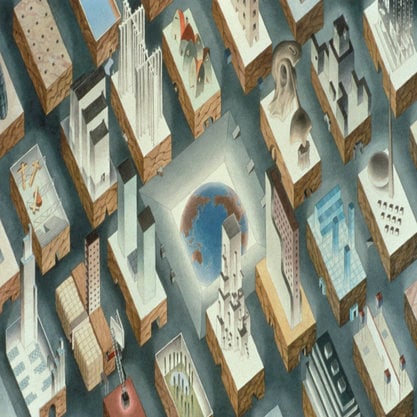Article
Duhart, Emilio (1917–2006) By Forster, Alejandra Celedon
Article
The Chilean architect Emilio Duhart Harosteguy is one of the most recognised modern architects and urban planners in the country. He is especially notable for the period he spent working as assistant for Walter Gropius and Konrad Wachsmann in the States and for Le Corbusier in France, whom he collaborated with in the planning of Chandigarh city in India. While Duhart was born in Temuco, he spent his childhood and primary and secondary education in France. He returned to Santiago and graduated as an architect from the School of Architecture at the Catholic University of Chile in 1941 and continued his studies at Harvard University (Master in Architecture 1942) and the Institut d’Urbanisme Sorbonne (Master in Urban Planning 1952).
Duhart’s first commissions were in relation to the Chillán earthquake (1939) reconstruction, and he worked mainly in rural housing as part of the Help and Reconstruction Corporation initiatives (1941). He belonged to a group of architects that went abroad at the time, and he imported foreign ideas and modes of architectural production to Chile; the other two main modes of foreign influence were architectural publications and external visitors to the country. From 1951 he taught at the Catholic University, becoming Director of the Institute of Urbanism, Housing and Planning.
